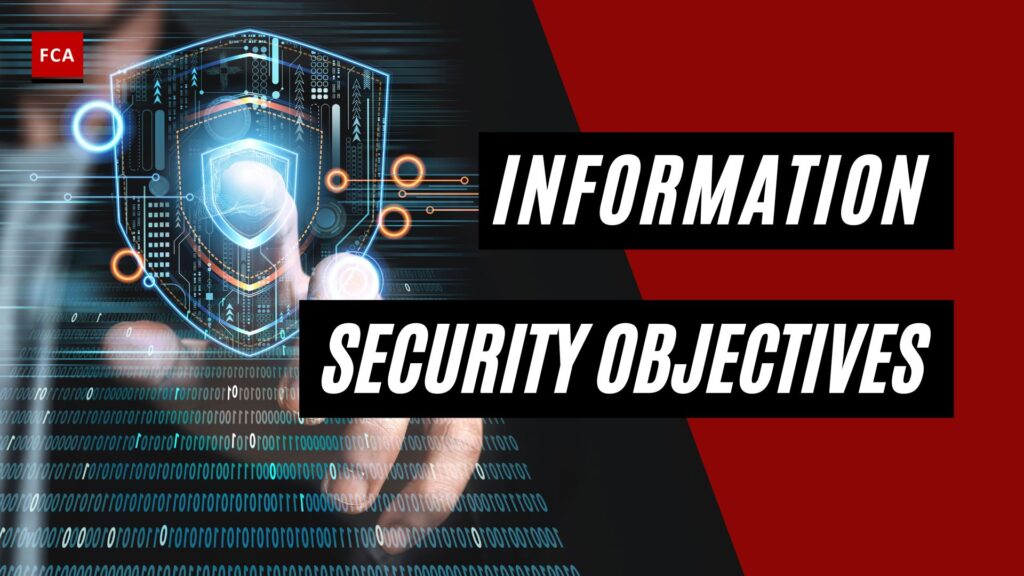Introduction
As cyber threats evolve, organisations and individuals must prioritise cybersecurity to protect sensitive data, systems, and networks. Cyber security is not just about deploying firewalls or antivirus software—it’s about establishing comprehensive security objectives that safeguard information assets from breaches, unauthorised access, and cyberattacks.
In this guide, we will explore the key objectives of cyber security, their significance, and the strategies required to achieve them.
What Are Cyber Security Objectives?
Cyber security objectives are the foundational principles that guide efforts to protect digital assets. These objectives aim to:
✔ Ensure the confidentiality, integrity, and availability of information (the CIA Triad).
✔ Prevent unauthorised access to sensitive data and systems.
✔ Reduce security risks and vulnerabilities.
✔ Ensure compliance with global cybersecurity standards.
✔ Improve resilience against cyber threats.
Now, let’s break down these objectives in detail.
Key Cyber Security Objectives
1. Confidentiality: Keeping Data Secure
Confidentiality ensures that sensitive information is only accessible to authorised individuals. This objective prevents data breaches, identity theft, and cyber espionage.
Threats to Confidentiality:
- Phishing attacks and social engineering
- Data leaks due to weak access controls
- Insider threats and unauthorised disclosures
How to Achieve Confidentiality:
✅ Encryption: Protects data by converting it into unreadable code.
✅ Access Controls: Uses role-based access control (RBAC) and multi-factor authentication (MFA).
✅ Data Masking & Tokenization: Ensures that sensitive information remains hidden from unauthorised users.
2. Integrity: Ensuring Data Accuracy and Trustworthiness
Integrity focuses on maintaining the accuracy and consistency of data throughout its lifecycle. It ensures that information is not altered by unauthorised users, whether intentionally or accidentally.
Threats to Integrity:
- Data tampering and cyber manipulation
- Malware attacks, such as ransomware
- Human errors and misconfigurations
How to Achieve Integrity:
✅ Checksums & Hashing: Detect and prevent unauthorised changes in files.
✅ Digital Signatures: Ensure document authenticity and verify sender identity.
✅ Data Backup & Recovery Plans: Restore accurate information in case of a breach or corruption.
3. Availability: Ensuring Continuous Access to Information
Availability guarantees that authorised users can access data and systems when needed. Downtime caused by cyberattacks or technical failures can disrupt business operations and services.
Threats to Availability:
- Distributed Denial-of-Service (DDoS) attacks
- Hardware/software failures
- Natural disasters affecting data centres
How to Achieve Availability:
✅ Redundancy & Failover Systems: Backup data storage and server mirroring.
✅ Load Balancing & Cloud Solutions: Distributes traffic evenly to prevent overloading.
✅ Regular Security Updates & Patching: Prevents exploits from outdated software.
4. Access Control: Restricting Unauthorized Use
Controlling who can access certain data or systems is crucial to prevent insider threats and data leaks.
How to Implement Access Control:
✅ Identity and Access Management (IAM): Ensures proper user authentication.
✅ Zero Trust Security Model: “Never trust, always verify” approach.
✅ Privileged Access Management (PAM): Limits admin access to critical systems.
5. Authentication: Verifying User Identities
Authentication is the process of ensuring that users are who they claim to be.
How to Strengthen Authentication:
✅ Multi-Factor Authentication (MFA): Combines passwords with biometrics or OTPs.
✅ Biometric Authentication: Uses fingerprint, facial recognition, or retina scans.
✅ Single Sign-On (SSO): Allows users to access multiple applications with one login.
6. Encryption: Protecting Data from Interception
Encryption transforms readable data into a secure format to prevent interception and eavesdropping.
Types of Encryption:
✅ Symmetric Encryption: Uses a single key for encryption and decryption (e.g., AES).
✅ Asymmetric Encryption: Uses public and private keys (e.g., RSA, SSL/TLS).
7. Compliance: Meeting Security Regulations
Many industries must comply with cybersecurity laws to protect user data and prevent legal penalties.
Key Compliance Standards:
✅ GDPR (General Data Protection Regulation): Protects EU citizens’ personal data.
✅ HIPAA (Health Insurance Portability and Accountability Act): Safeguards healthcare information.
✅ ISO 27001: Establishes an information security management system (ISMS).
8. Incident Response: Reacting to Cyber Threats
A strong incident response plan helps organisations detect, contain, and recover from cyberattacks.
Key Incident Response Strategies:
✅ Threat Detection & Monitoring: Using SIEM (Security Information and Event Management) tools.
✅ Cybersecurity Drills & Simulations: Training employees for emergency situations.
✅ Data Recovery & Forensic Analysis: Investigating attack origins and restoring lost data.
9. Security Architecture: Designing Secure Systems
Security architecture ensures that cybersecurity is integrated into all aspects of IT infrastructure.
How to Implement Secure Architecture:
✅ Network Segmentation: Reduces the attack surface by isolating critical systems.
✅ Endpoint Security: Protects devices with firewalls, antivirus software, and EDR solutions.
✅ Cloud Security Best Practices: Implements strong identity verification and encryption.
10. Auditing: Monitoring and Evaluating Cybersecurity Measures
Cybersecurity auditing ensures that security measures remain effective against evolving threats.
How to Conduct Cybersecurity Audits:
✅ Vulnerability Assessments: Identifies weak points in security controls.
✅ Penetration Testing: Simulates cyberattacks to evaluate defences.
✅ Log Analysis: Monitors system activity for suspicious behaviour.
Conclusion: Strengthening Cyber Security with Clear Objectives
Cybersecurity is an ongoing process, not a one-time implementation. By following the key cybersecurity objectives—confidentiality, integrity, availability, access control, and compliance—businesses and individuals can significantly reduce cyber risks.
Organisations must also adopt proactive strategies, such as incident response planning, authentication protocols, and security audits, to stay ahead of emerging cyber threats.
By prioritising these cybersecurity objectives, you can protect critical data, build trust, and maintain business resilience in an increasingly digital world.
FAQs on Cyber Security Objectives
❓ What are the 3 main objectives of cybersecurity?
✔ Confidentiality, Integrity, and Availability (CIA Triad).
❓ Why is authentication important in cybersecurity?
✔ It verifies user identities, preventing unauthorised access.
❓ How does encryption protect data?
✔ It converts data into unreadable formats, accessible only by authorised users.


